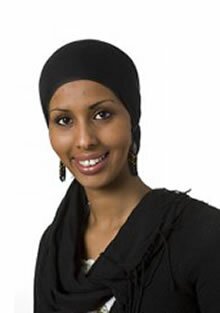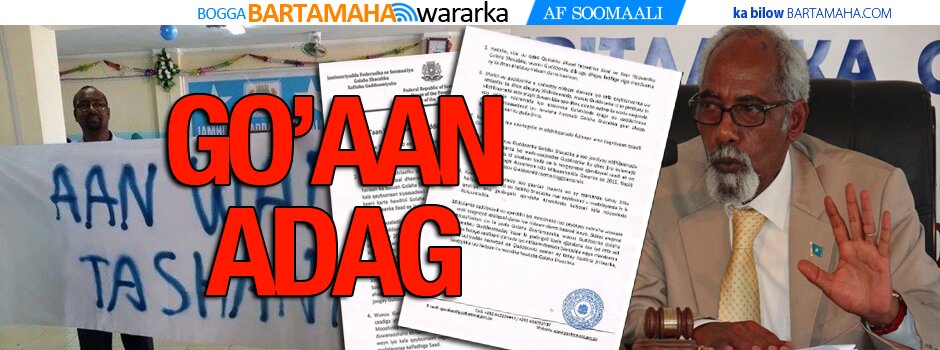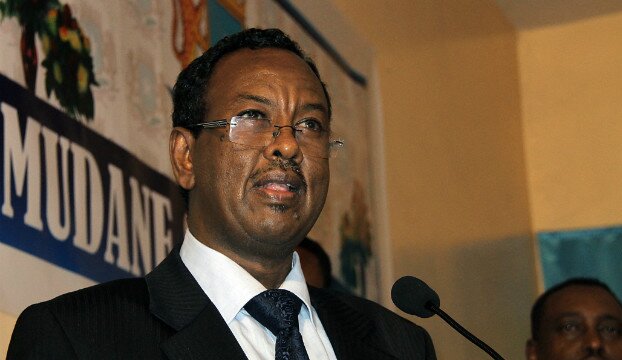Sweden: Interview: Rahma Dirie about her recent tour to Minnesota
 On Friday 29 October the Somali Radio Sweden has interviewed a Somali lady and a member of the Moderat (M) political party, Rahma Dirie. She has travelled to Minnesota as part of a Swedish delegation whose main objective was to learn from the experiences of the Somalis in America in terms of integration and business. Somalis in America are successful entrepreneurs who are integrated and better connected to the system than those in Sweden. The question the delegates were asking themselves is why Somalis who are known to be people of the same origin in many aspects of identity, culture, religion and language are making so much of progress in one part of the world like America and so perform so bad in other countries like Sweden?
On Friday 29 October the Somali Radio Sweden has interviewed a Somali lady and a member of the Moderat (M) political party, Rahma Dirie. She has travelled to Minnesota as part of a Swedish delegation whose main objective was to learn from the experiences of the Somalis in America in terms of integration and business. Somalis in America are successful entrepreneurs who are integrated and better connected to the system than those in Sweden. The question the delegates were asking themselves is why Somalis who are known to be people of the same origin in many aspects of identity, culture, religion and language are making so much of progress in one part of the world like America and so perform so bad in other countries like Sweden?
In her interview Rahma Diries throws the blame squarely upon the learning of the Swedish language which is difficult as she says and Swedish administrative bureaucracy which according to her constitute another factor that make Somalis in Sweden lag behind their counterparts in America. “In America” she says “people speak English and Somalis know a little English or can learn it soon but the Somalis who come to Sweden, particularly those who are already in a higher age-group, will find the Swedish language quite hard and that would lead to a virtually slow integration into the Swedish system”
Secondly Rahma points out that there is no such hectic bureaucracy in America as we have in Sweden and the tax in America is much lower than that of Sweden. So people can sustain life with the meagre income they generate from a small-scale business. “A Somali immigrant in Sweden can not run such a business in Sweden because the low profit margin will not allow him or her to be successful as it is not enough to cover survival expenses or pay rent and other obligations including tax”. America is not a welfare state therefore people have to fend for themselves and that is one of the reasons of why people are out in the business market according to Ms. Dirie.
Ms. Rahma Dirie emphasizes that in America one has a period of five years to be supported by the government during which time the person receives training to stand on his or her feet. So inside five years an immigrant must adjust himself or herself in the system before it is too late. “But in general” Rahma says “America, especially the state of Minnesota has shown a lot of flexibilities with the purpose of facilitating immigrants to integrate. We do not have such flexibilities in Sweden and so we have to admit that we can not compete with the Americans in that respect”.
Continuing to clarify the differences between the two communities Rahma explains that people can set up shops everywhere while in Sweden there are rules as to where a shop or restaurant is opened and what kind of goods or food the owner is selling. One thing we can note here is that the high tax in Sweden gives the business owner a right to be supported if something happens to the business such as fire tragedy or bankruptcy while in America people get this compensation by being involved in several business or employment activities to increase their income so that if one business goes bankrupt they will fall back on the other.
Rahma eloquently shares stories with her listeners to shed light on how the language, cultural and administrative difference affects of the two countries affects the lives of the Somali communities living in Sweden and America. “On getting employment in Sweden one needs to be recommended by people or agencies who know his or her background to act as a reference but in America one can get a job without such hurdles” says Rahma as she narrated the story of a lady she had met in one of the biggest Minnesota Malls. With a surging steam of curiosity building within her mind to know how easy or difficult to get a job in America, she asked the lady how she had landed the job. Rahma received a short but a fantastic answer. She says with much ease and tremendous comfort in her voice, “The lady told us that she had just applied the job and got it right away without any difficulty of producing reference papers or showing testimonials to prove that she is a reliable person with a sufficient experience to perform the tasks satisfactorily. ”. Compared to Sweden Rahma says “ This is something quite impossible to happen”
To know the success of the Somalis the delegation did not need to go deep into the city. Their surprise has started at the airport as Ms. Diries says. “We were impressed by the number of Somalis working in the different sections of the airport. A good number of them had manned the counters. They were visible in almost everywhere. They were at the passport check section and the fingerprint department. I saw them in the sections dealing with loading and unloading of cargo, etc. If I compare the two Somali communities in the two countries, I say that the big difference is that one community sees itself as part of the nation while the other considers think themselves as Somalis in a foreign land.
In highlighting this difference Dirie says “ The Somalis in America act as if they are Americans while here there is some suspicion among the people of both communities: Swedes and Somalis. That notion should be eradicated as Dirie expresses. She suggests that there is a need to create a forum for dialogue between the Somalis and the Swedish people to close the gap. Speaking of the openness of the Somalis in America whom she thinks are less stressed than those in Sweden, Dirie says that she had admired the people for their industrious character and inventiveness, admitting that her mental image of American people which was a bit negative in previous times has greatly changed.
In terms of food, Dirie tells that she had eaten camel burger in Minneapolis run by a Somali businessman who once visited Sweden and after seeing (Kungshallen?) decided to make such a business in America. Then he invented this idea of Camel Burger which is today a booming business of which its non-Somali customers constitute a very large percentage.
About the way of dressing of Somalis in America, Dirie spoke at length about the Somali dressing and how women can get job while covering their bodies. “We have seen them in their traditional Moslem attire when we visited the shops or market centers. Their style of dressing did not stop them from integrating or relying on themselves for all their economic needs. We met women in all sectors of business and we have at one time met a woman cleaner wearing her Islamic veil in the Holiday Inn hotel where we stayed during our tour. I showed the veiled cleaner (Jalbab) to a colleague from the Swedish workforce office and she and have exchanged few words concerning that we shall never let people do any cleaning jobs with a machine like while wearing Jalbab”. Rahma further explains how it was possible for a covered lady to get job in the American market by saying “In America no one bothers what one wears, what matters most is how well one takes his or her duty seriously enough to satisfy the employer”
On the issue of migration and multiculturaliy and how it affects the social behavior of the host community, Rahma points out that the issue of migration and diversity makes a big difference if we compare the two countries of Sweden and America. She says that people have been migrating to America since 18th century but in Sweden the issue of people migrating to Sweden is quite new and that is why interaction between immigrants and the Swedes is so slow at both sides in contrast with that of America.
“One of the most impressive aspects of our trip is the meeting with Americans of Swedish origin who have migrated to America in the 1800s. We appreciated their attitude when they approached us calmly and asked: how do you see your new country,Sweden”. Rahma points out saying that “the Swedish-Americans preserve their own culture and language. They are still keeping items which they inherited from their families more than a century ago and they are even renovating old houses and structures in which their ancestors have been dwelling those days”.
One very strong message the Swedes have given them was to preserve their own culture and language and as Rahma remembers these words one can note a change of tune in her voice as it deepens when she memorizes the full content of the message. “They told us to protect our history and culture as our children will ask us one day why and how we came to Sweden” said Rahma mentioning that the Swedes in America know their culture and religion more than the Swedish in Sweden who never migrated to another country. She told that she has bought CD´s on Swedish history and culture from these communities which she thinks are unavailable here in Sweden.
In speaking of why Minneapolis and not other American cities, Rahma says “We have selected Minneapolis as our tour site largely because of the book written by Benny Carlson who inspired us to visit that city and make comparisons. Now since we have garnered a great deal of experience and listened a great number of success stories about the Somalis in that city, we try to draw up a number of recommendations which we hope will help improve the life of the Somali immigrants in Sweden.
==========================
Source:- Somali Radio Sweden
Comments
comments
 Calendar
Calendar




































